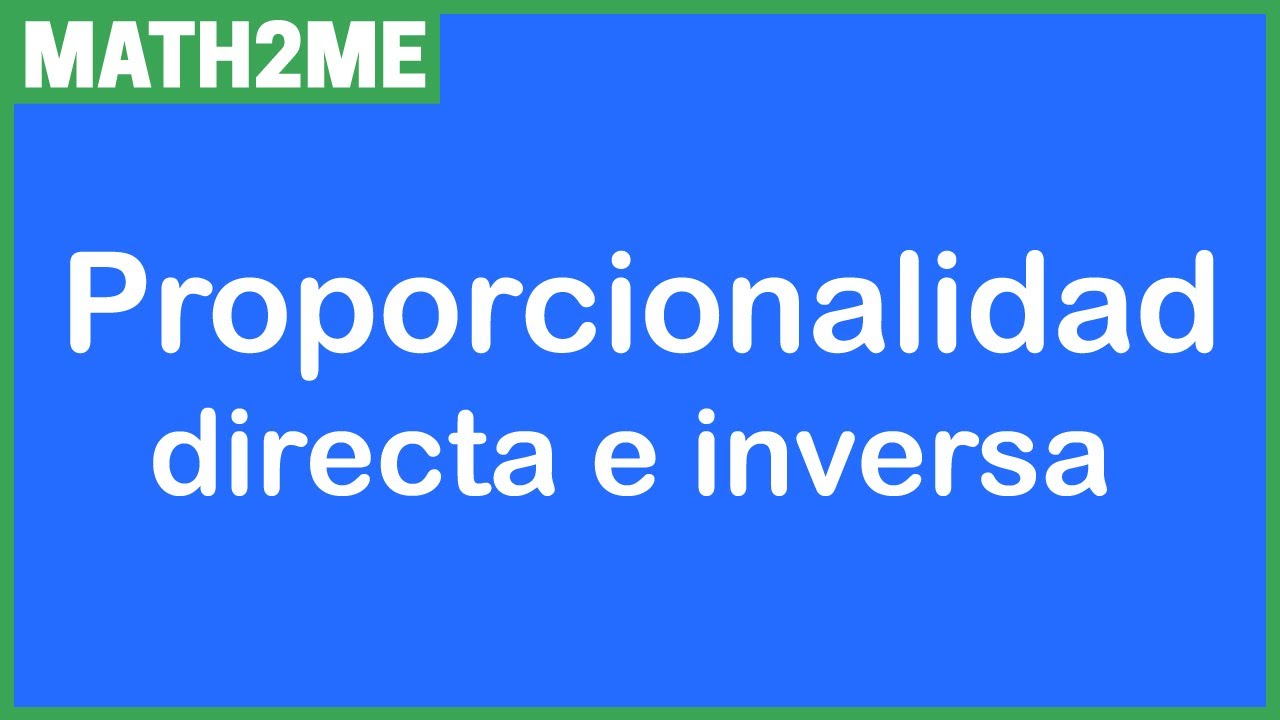Matemática Básica para o ENEM | Parte 3 (Razão e Proporção)
Summary
TLDRThis math tutorial video covers key topics on ratios and proportions for the ENEM exam, explaining the importance of understanding direct and inverse proportionality. Through practical examples, it illustrates how to solve problems using the rule of three, both simple and compound. The video emphasizes the significance of proportionality in real-life scenarios and offers strategies for quick problem-solving, including how to handle different types of questions on the exam. The tutorial provides clear steps and tips for mastering these essential concepts, making them accessible and understandable for students preparing for the ENEM.
Takeaways
- 😀 Reason and proportion are essential topics for the ENEM exam, and understanding them is crucial for solving math problems.
- 😀 A ratio represents the relationship between two quantities, and a proportion is an equation stating that two ratios are equal.
- 😀 Directly proportional quantities increase or decrease together. For example, more hours worked means higher earnings.
- 😀 Inversely proportional quantities are related in such a way that as one increases, the other decreases. For example, dividing money based on age.
- 😀 The constant of proportionality (k) can be used to solve problems involving proportional relationships.
- 😀 In problems involving direct proportionality, it's important to recognize the relationship between the quantities and calculate accordingly.
- 😀 Inversely proportional problems can often be solved by recognizing that as one value increases, the other must decrease.
- 😀 The rule of three simple is a fundamental method for solving proportionality problems, where you multiply diagonally and solve for the unknown.
- 😀 The rule of three is often used in real-world situations, such as dividing money based on age or calculating the time needed to complete tasks.
- 😀 In more complex problems, such as the rule of three composed, multiple variables are considered, often relating to work, time, and resources.
Q & A
What is the main topic of the video?
-The main topic of the video is 'Reason and Proportion' in mathematics, particularly as it relates to the ENEM exam.
How does the speaker describe the importance of understanding basic math for the ENEM?
-The speaker emphasizes that understanding basic math, including concepts like 'reason' and 'proportion,' is essential for the ENEM exam, and encourages viewers to review previous lessons for a better grasp of foundational concepts.
What is the difference between 'reason' and 'proportion'?
-'Reason' is a ratio, where one quantity is compared to another (e.g., 6/3). 'Proportion' is an equation that expresses the equality of two ratios (e.g., 6/3 = 12/6).
What does the speaker mean by 'directly proportional'?
-Directly proportional means that as one quantity increases, the other also increases in a consistent manner. For example, the more hours the speaker works as a consultant, the more money they earn.
Can you explain the 'inversely proportional' concept with an example from the video?
-Inversely proportional means that as one quantity increases, the other decreases. For instance, if two people are eating popcorn, the more people eating, the less time it will take to finish the popcorn.
How does the speaker demonstrate the division of money between two children in an inversely proportional way?
-The speaker gives an example where money (R$120) is divided between two children, Manu and Murilo, inversely proportional to their ages. Since Manu is older, she gets more money, but the amount is inversely proportional to their ages.
What role does the 'constant of proportionality' (k) play in the video?
-The constant of proportionality (k) is used to find the relationship between two quantities in proportional problems. It helps in determining how much each individual part (e.g., Manu or Murilo) will receive in a proportional division.
What is the main concept behind 'rule of three' (regra de três) presented in the video?
-The 'rule of three' is a mathematical method used to solve problems involving proportions. It involves setting up a ratio equation and solving for an unknown quantity by cross-multiplying.
How does the speaker simplify the 'rule of three' process for practical use?
-The speaker simplifies the process by explaining how to set up a proportion equation, cross-multiply, and solve for the unknown. The rule is especially useful in everyday scenarios, like determining costs or calculating time needed for tasks.
What does the video say about the frequency of inversely proportional problems in the ENEM exam?
-The video mentions that directly proportional problems are more common in the ENEM exam, making up about 95% of related questions, with inversely proportional problems being less frequent.
Outlines

This section is available to paid users only. Please upgrade to access this part.
Upgrade NowMindmap

This section is available to paid users only. Please upgrade to access this part.
Upgrade NowKeywords

This section is available to paid users only. Please upgrade to access this part.
Upgrade NowHighlights

This section is available to paid users only. Please upgrade to access this part.
Upgrade NowTranscripts

This section is available to paid users only. Please upgrade to access this part.
Upgrade NowBrowse More Related Video

MasterClass de Álgebra | Proporcionalidad Directa e Inversa

Perbandingan Senilai dan Berbalik Nilai [Part 3] - Perbandingan Berbalik Nilai

Let’s PRACTICE Ratios, Rates and Proportions…step-by-step…

REGRA DE TRÊS COMPOSTA | COMO CALCULAR REGRA DE TRÊS COMPOSTA | \Prof. Gis/

Kelas VII - Perbandingan Senilai dan Berbalik Nilai

Direct and Inverse Proportion
5.0 / 5 (0 votes)